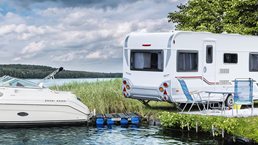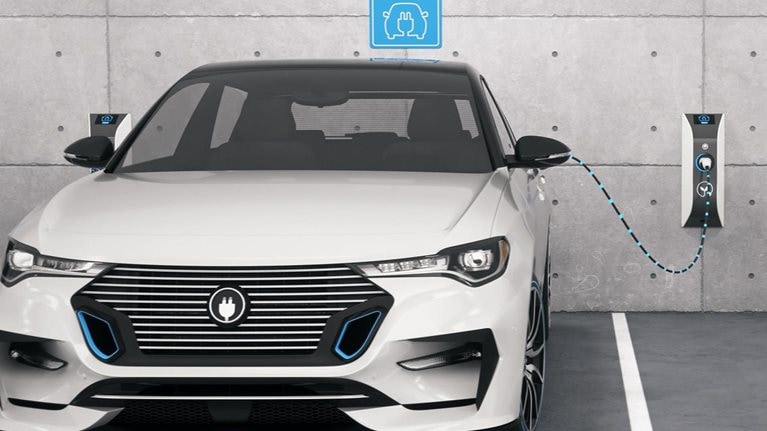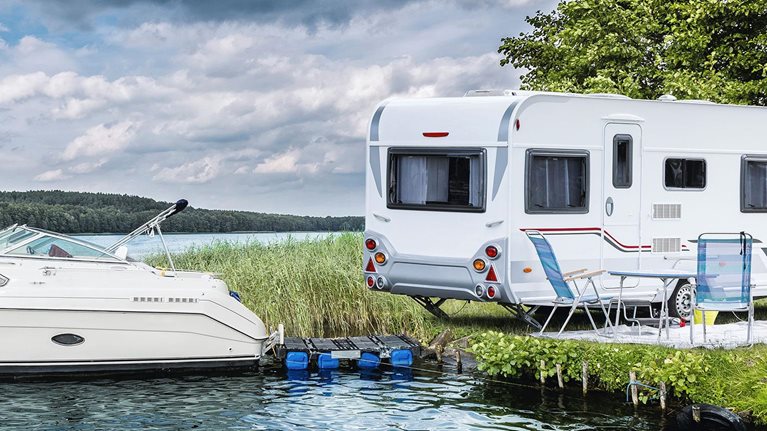As global temperatures continue to rise, the clock is ticking on climate change.1 And with transport being the second-biggest industrial emitter of greenhouse gases, the same is true for internal-combustion engines (ICE). One reason is that the climate arguments for electrification are incontrovertible. Indeed, through 2030, total electrification of global transportation would drive 15 percent of the abatement required to keep warming below 1.5°C.2
Passenger vehicle decarbonization is under way on every continent, with sales of electric vehicles reaching all-time highs. However, commercial fleets are a different story. Worldwide sales of electric light commercial vehicles (LCVs) were less than 200,000 units in 2021, compared with six million electric passenger cars. Electric passenger cars now account for 6 percent of all car sales, while electric LCVs account for just 2 percent of sales in that vehicle segment.3
Why has electrification of commercial vehicles lagged that of passenger cars? A primary cause is that commercial vehicles are usually heavier and travel longer distances, putting extra pressure on lithium ion batteries. In addition, fleet infrastructure costs are high: the Level 3 DC chargers required for commercial fleets are much more expensive than the Level 1 chargers often used for passenger vehicles. This creates a chicken-and-egg paradox: operators need an installed base of charging infrastructure before transitioning, but infrastructure builders want to see more vehicles being sold before investing. Moreover, there is a psychological hurdle to overcome, with some in the industry not yet convinced that battery power is fit for commercial usage. Finally, some uncertainty remains about winning technology.
Would you like to learn more about our Automotive & Assembly Practice?
That said, decarbonization also offers fleet operations substantial opportunities. With commercial vehicles responsible for a third of transportation emissions, electrification at scale would insulate them against regulatory dynamics, improve their brand equity, and play a significant role in slowing climate change.4 Moreover, across industries, tackling transportation emissions would be one of the most cost-effective abatement options. Many use cases are already in the money, and most others are projected to reach cost parity with ICE by 2030.
Amid rising expectations to “do something,” many fleet operators are responding. Research shows that 75 percent of the 200 largest US fleet operators—responsible for about 1.2 million vehicles—have committed to decarbonization targets for public fleets, and many are starting to invest.5 Almost 50 percent of fleet owners have purchased an electric vehicle or plan to purchase one in 2022.6 Further, more than 50 percent plan to operate fully carbon-free fleets by 2027, and 90 percent plan to fully decarbonize eventually. The momentum is toward decarbonization.
Drivers of decarbonization
One reason for accelerating momentum on commercial-vehicle decarbonization is that many customers desire it, because they seek to reduce emissions through the value chain. In addition, regulators are ramping up pressure—for example, through the US Environmental Protection Agency’s 2021 Clean Trucks Plan. And there is strong anecdotal evidence that people prefer working for more sustainable companies, meaning that it is easier for greener companies to attract top talent.
Another driver is increasing availability of financing—in particular, low-cost financing for the green transition through sustainability bonds, green bonds, and green loans. The outstanding value of sustainable instruments globally has grown by 57 percent a year since 2017, reaching $1.4 trillion in 2021.7 And despite headwinds associated with technology uncertainty, there is a rising supply of electric LCVs and medium-duty trucks.

Low-carbon fun: Making RV manufacturing greener
Finally, there are increasingly powerful arguments on costs, enabled by an eightfold increase since 2008 in the volumetric energy density of lithium ion batteries and scaling effects in manufacturing.8 Indeed, zero-emissions vehicles are projected to reach total cost of ownership (TCO) parity across multiple use cases in the next decade. In general, shorter-distance and lighter-vehicle use cases will reach cost parity sooner (Exhibit 1). One reason is that shorter distances often involve more stop-start driving and therefore more regenerative braking to extend battery life. For medium- to long-haul use cases, TCO parity will come toward the end of the decade. That should not detract from the opportunity for fleet operators to strategically deploy zero-emissions options sequentially.9

The truck segment closest to TCO parity today is LCVs. In terms of cost per mile, electric LCVs will be 5 to 10 percent cheaper than ICE vehicles by 2025, our analysis shows.10 The high up-front cost of the vehicle and charging infrastructure will be more than offset by reduced operating costs. The biggest efficiencies will be in fuel and maintenance, which would see cost-per-mile reductions of 60 percent and 70 percent, respectively (Exhibit 2).

Any comparison is subject to volatility in the price of energy. A 50 percent increase in the price of electricity, for example, would drive the cost of battery electric vehicles (BEVs) up by 5 to 10 percent. Conversely, a 50 percent rise in the price of gasoline would spur a 20 percent increase in ICE costs, pushing the BEV advantage to 20 to 25 percent per mile. Furthermore, as demand for BEVs increases relative to ICE vehicles, the residual value of BEV assets will likely rise, driving TCO advantage.
Of course, change rarely happens all at once. During the transition to BEVs and fuel cell electric vehicles powered by hydrogen, alternative power sources such as compressed natural gas and liquid natural gas may offer potential bridges before cost parity is achieved in all use cases.
Executing a smooth transition
Transitioning to a decarbonized fleet presents operators with significant opportunities. But with so many players looking to make the transition simultaneously, excellent execution will distinguish leading businesses from the rest. This is particularly the case as operators contend with the current supply chain constraints and economic uncertainty. Key enablers for decarbonization will include robust planning, speedy action, and the ability to control costs. Not all companies are equally well positioned to implement these capabilities. Indeed, 53 percent of operators say they lack the necessary expertise.11
As operators consider their options, four major themes are likely to dominate their strategic considerations: support infrastructure, fleet requirements, economics and sustainability, and vehicle types (Exhibit 3).

Fleet operators planning for and executing decarbonization must grapple with complex issues, but time is of the essence. Being among the early movers in planning for infrastructure rollout and addressing operational challenges can give operators an advantage in securing assets and realizing TCO benefits. Companies that delay their transition risk lower asset availability amid rising demand and supply bottlenecks, along with significant reputational, legal, and financial risk if they cannot keep up with changing regulations and consumer expectations.
In short, the industry is approaching a point at which fleet decarbonization will become a significant business opportunity and strategic differentiator. The evidence on costs and technology suggests that first movers will benefit most, by capturing value and developing the know-how that will translate into sustainable competitive advantage.


